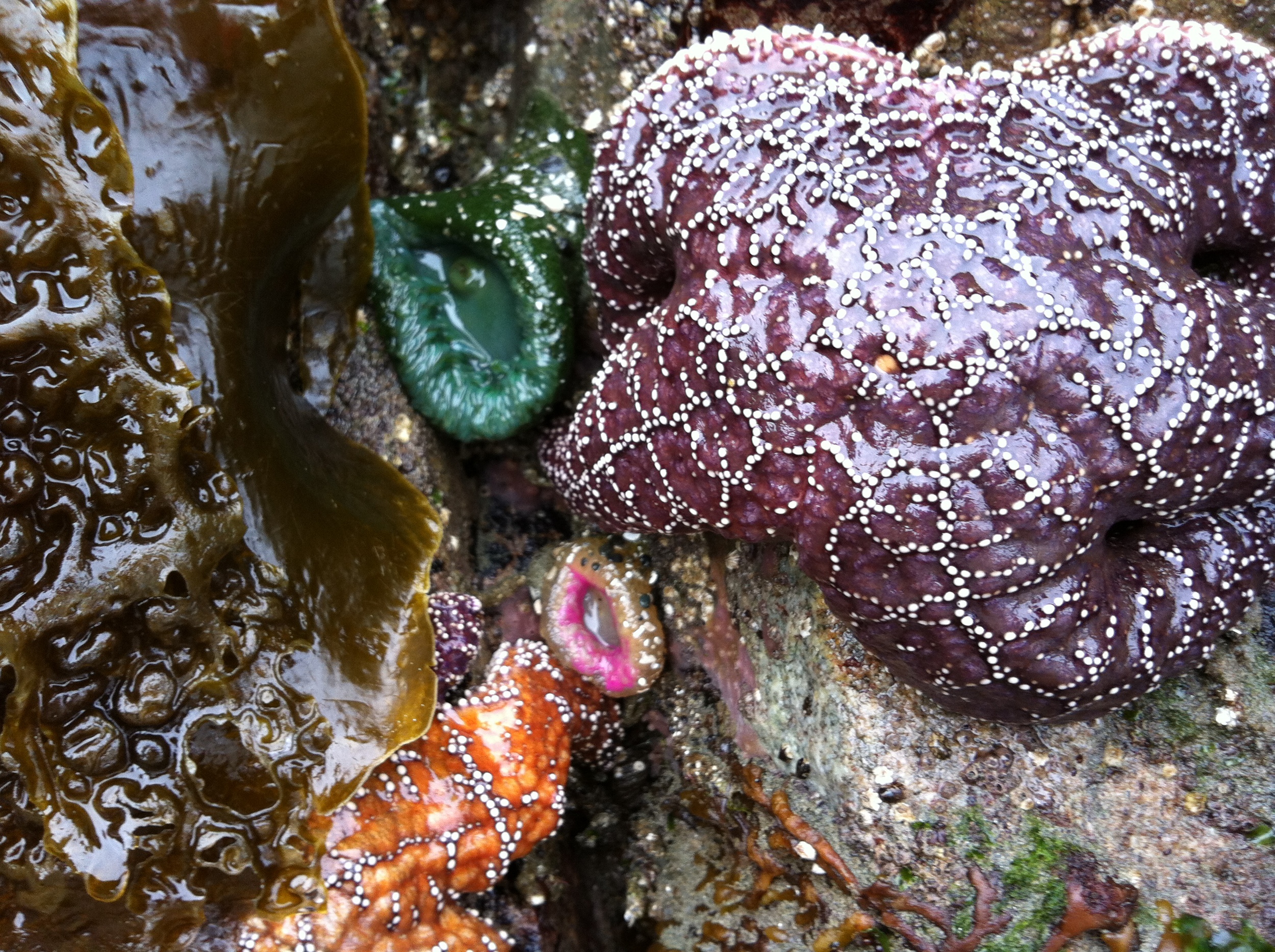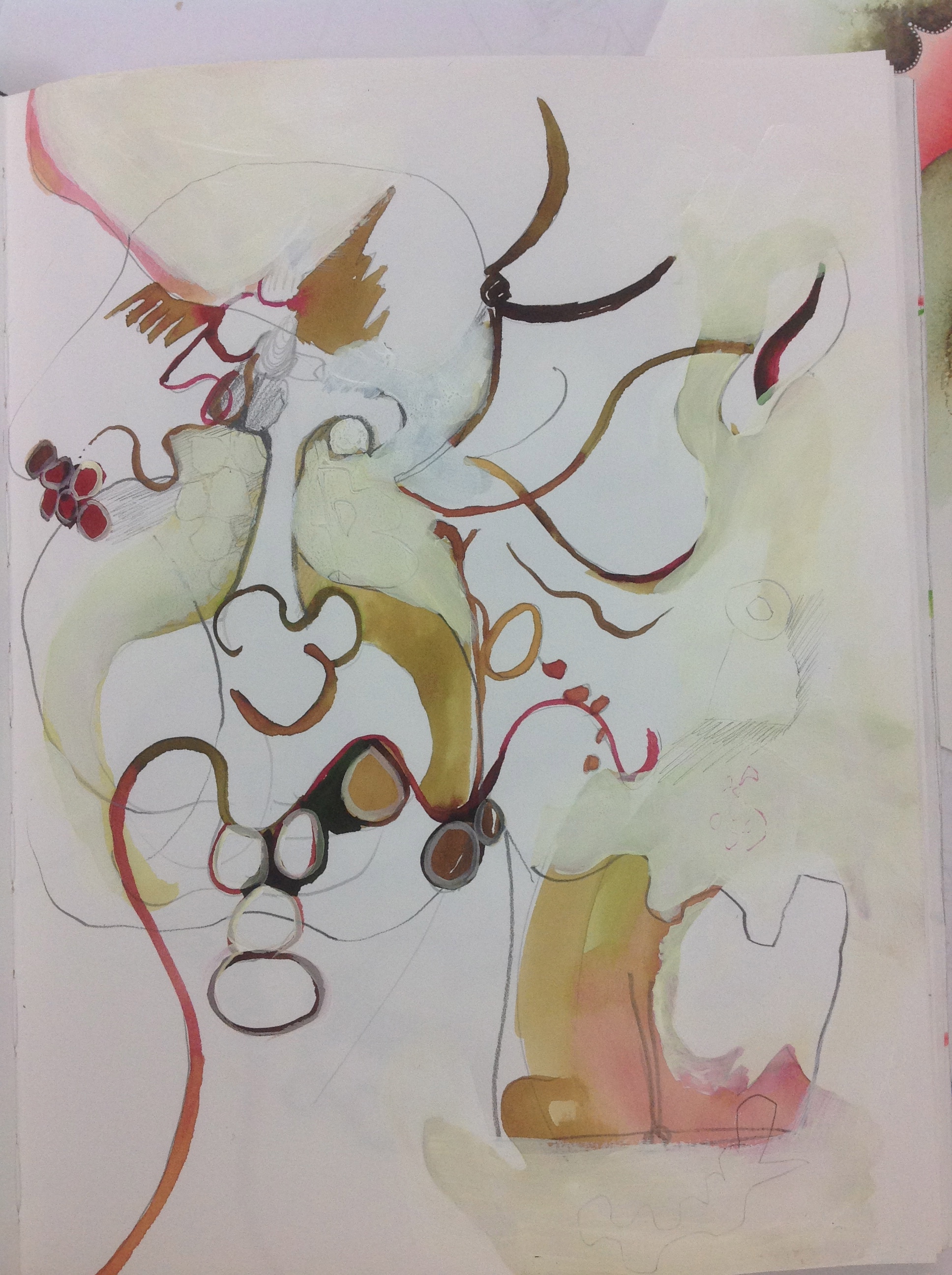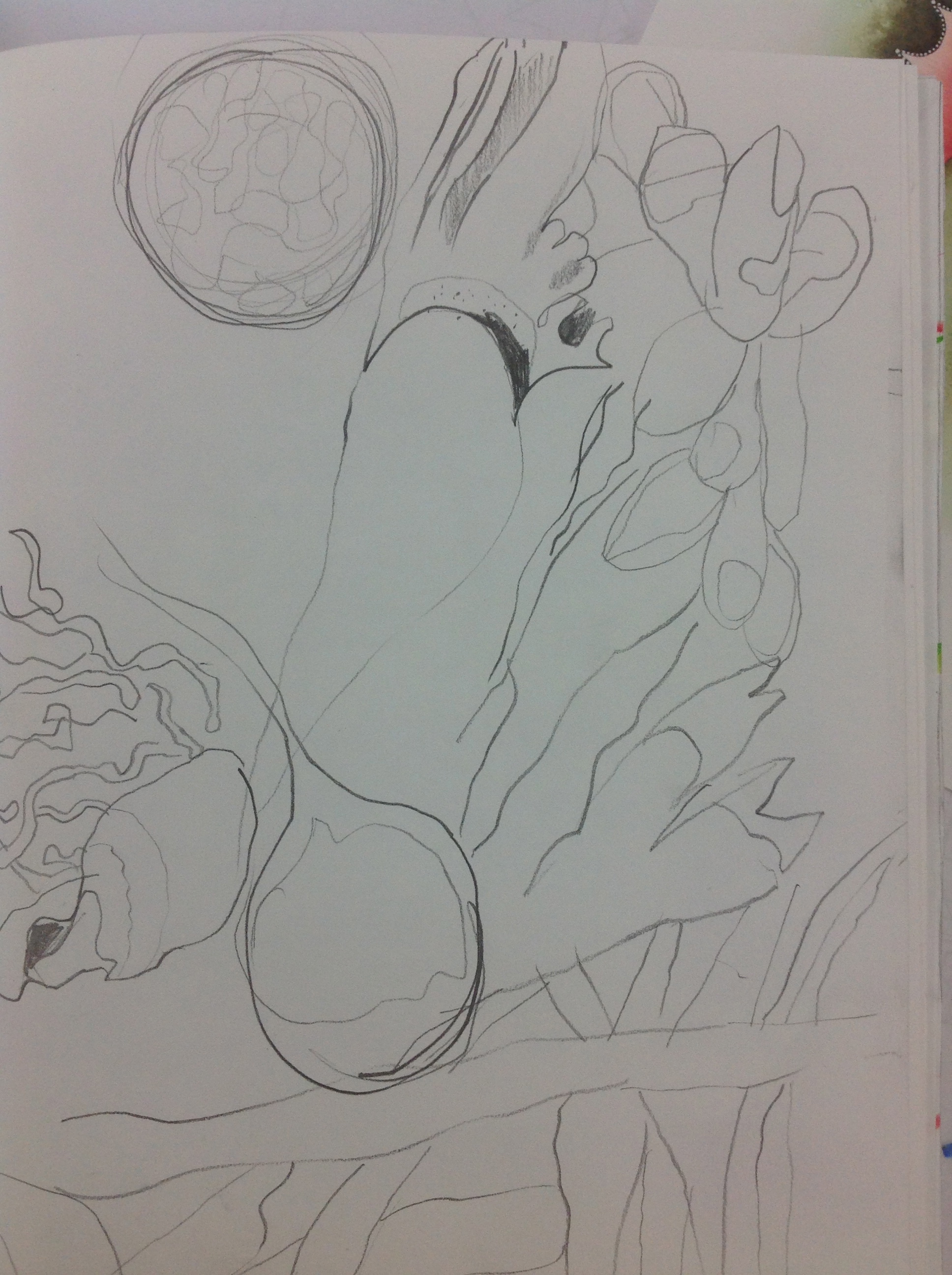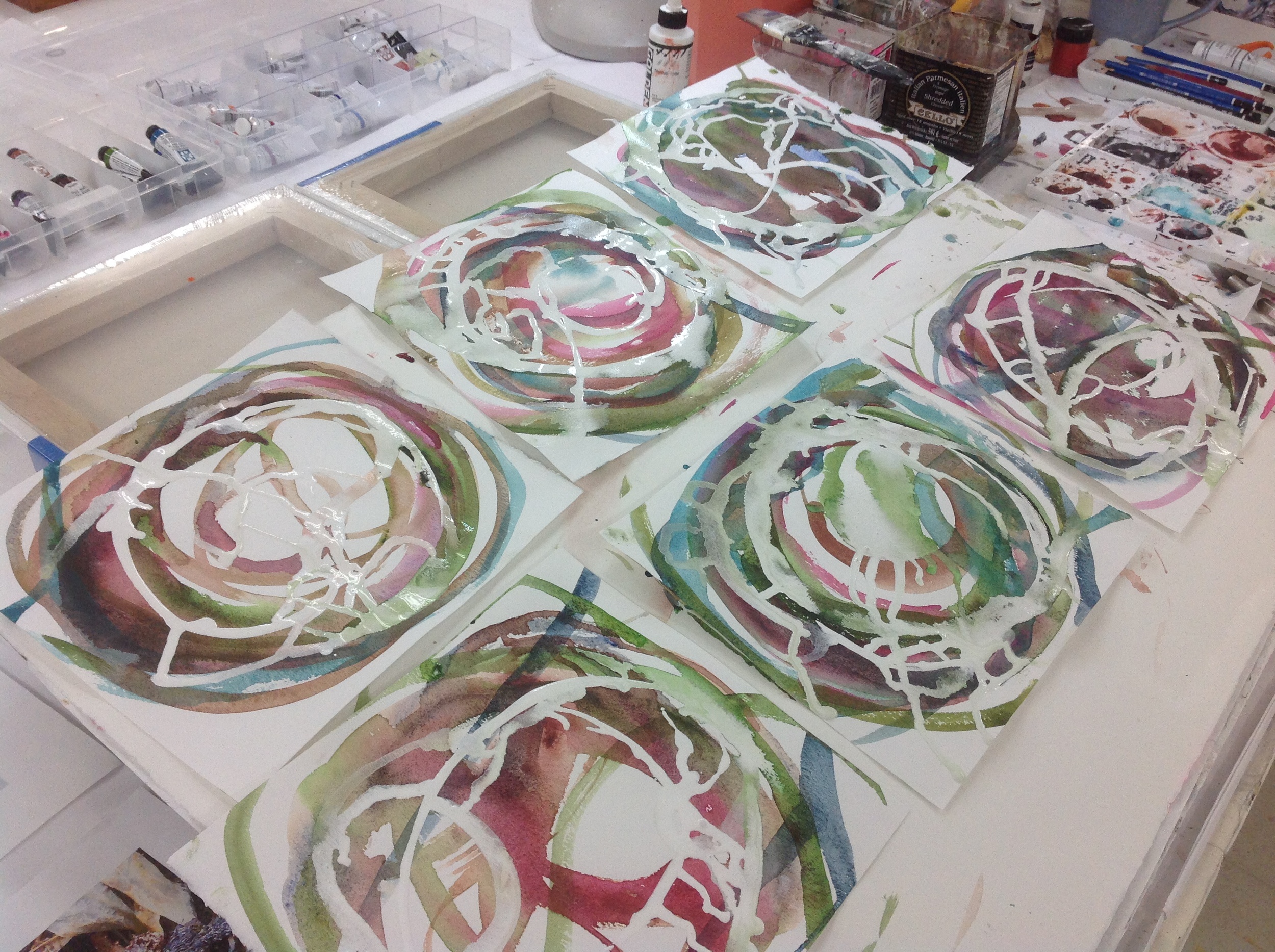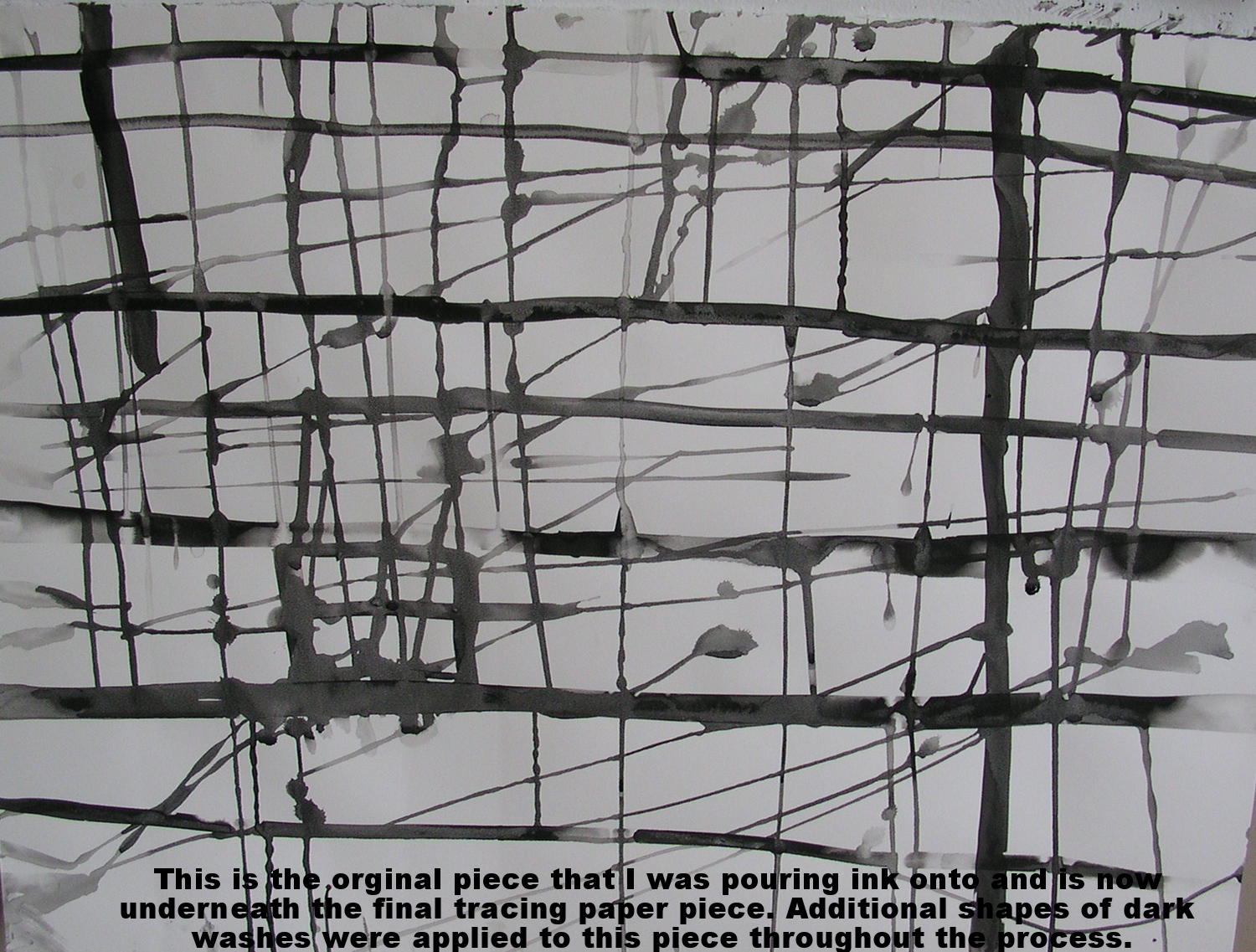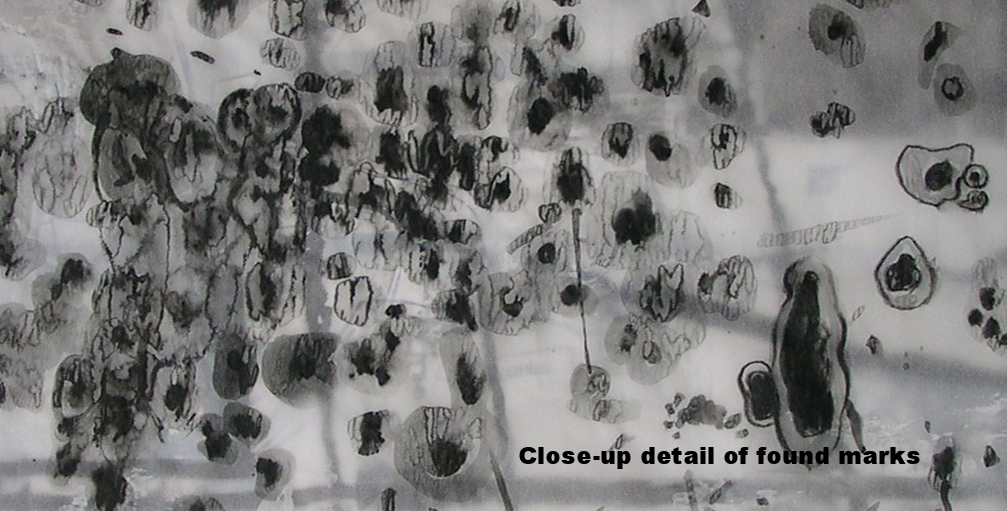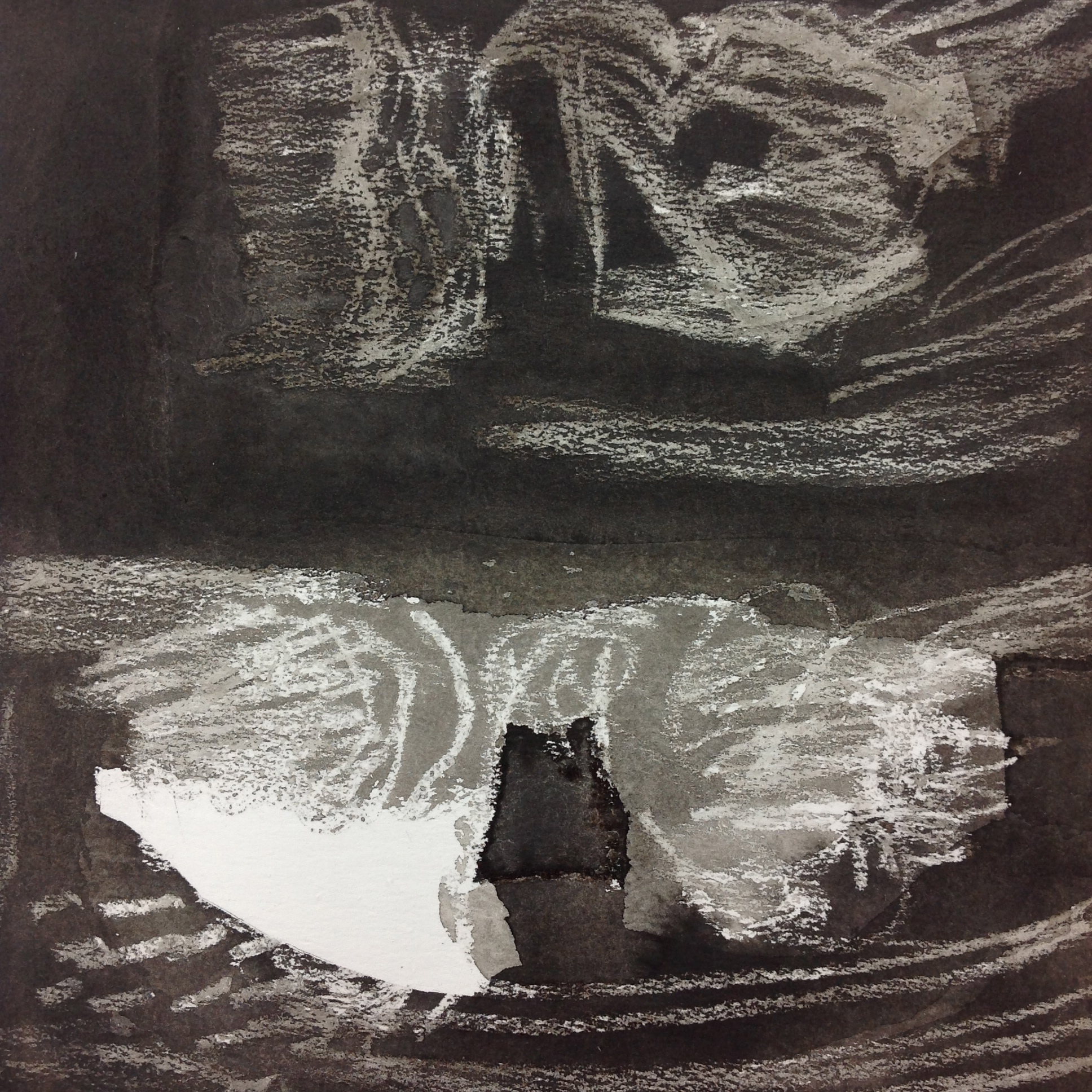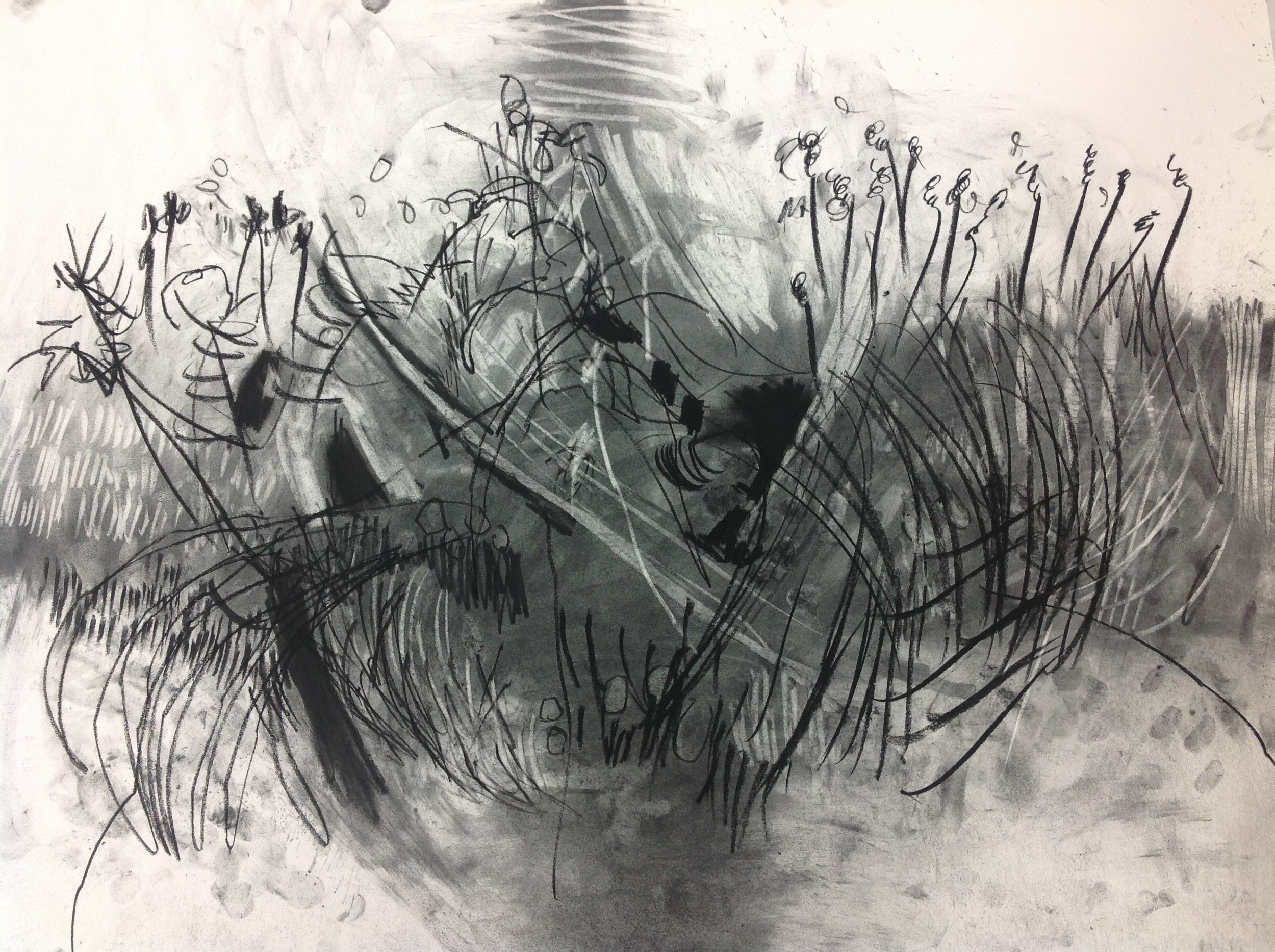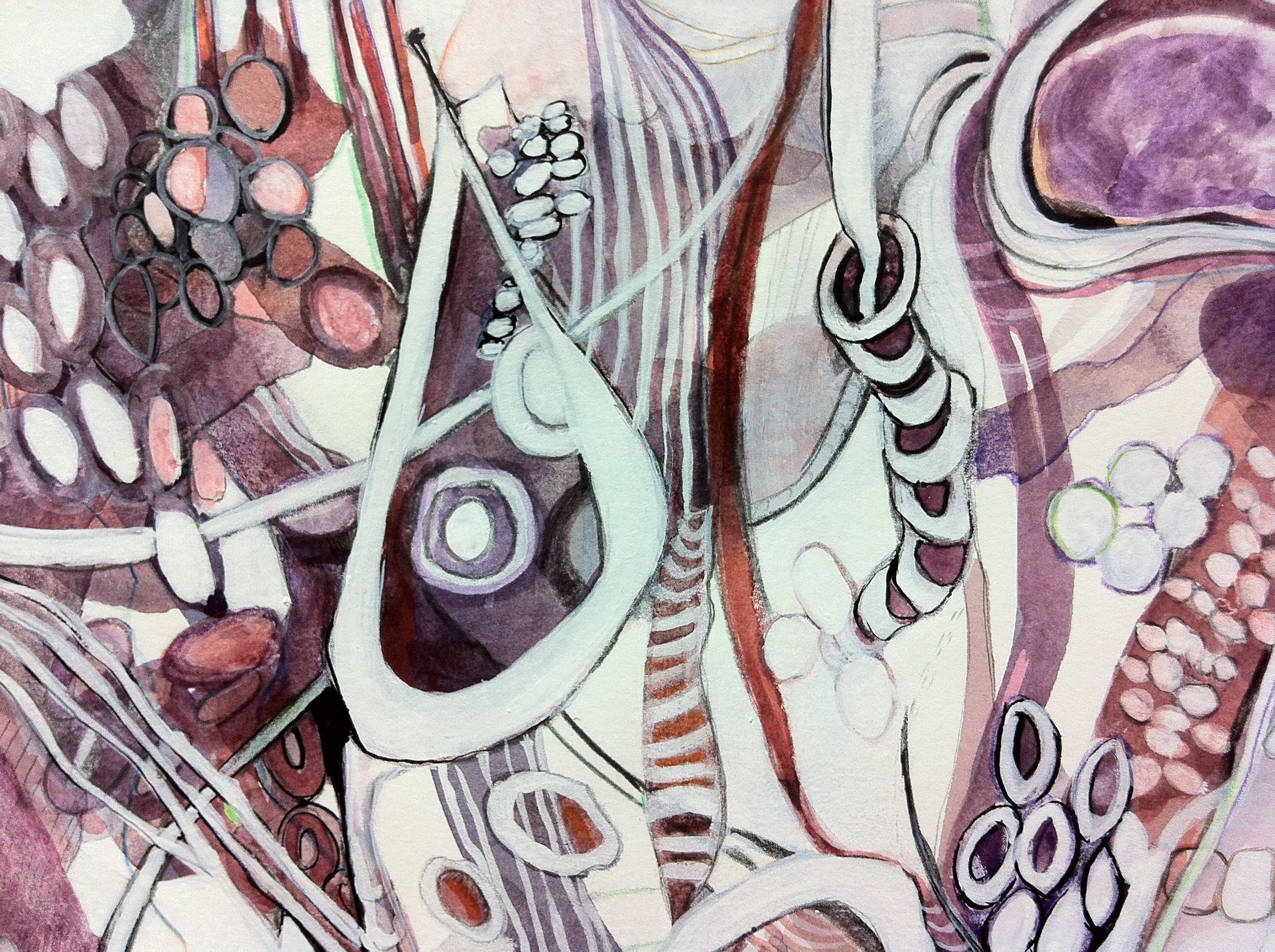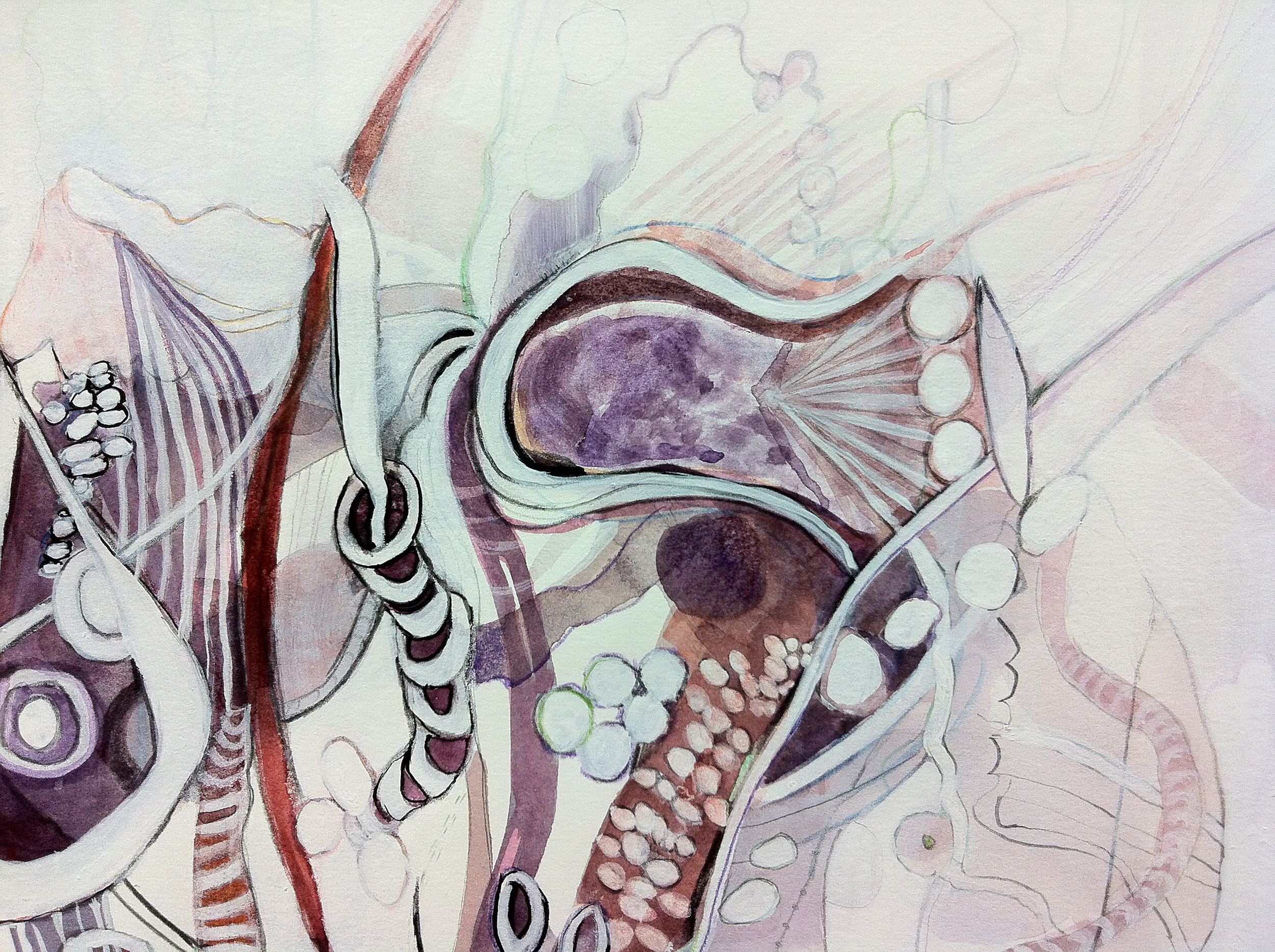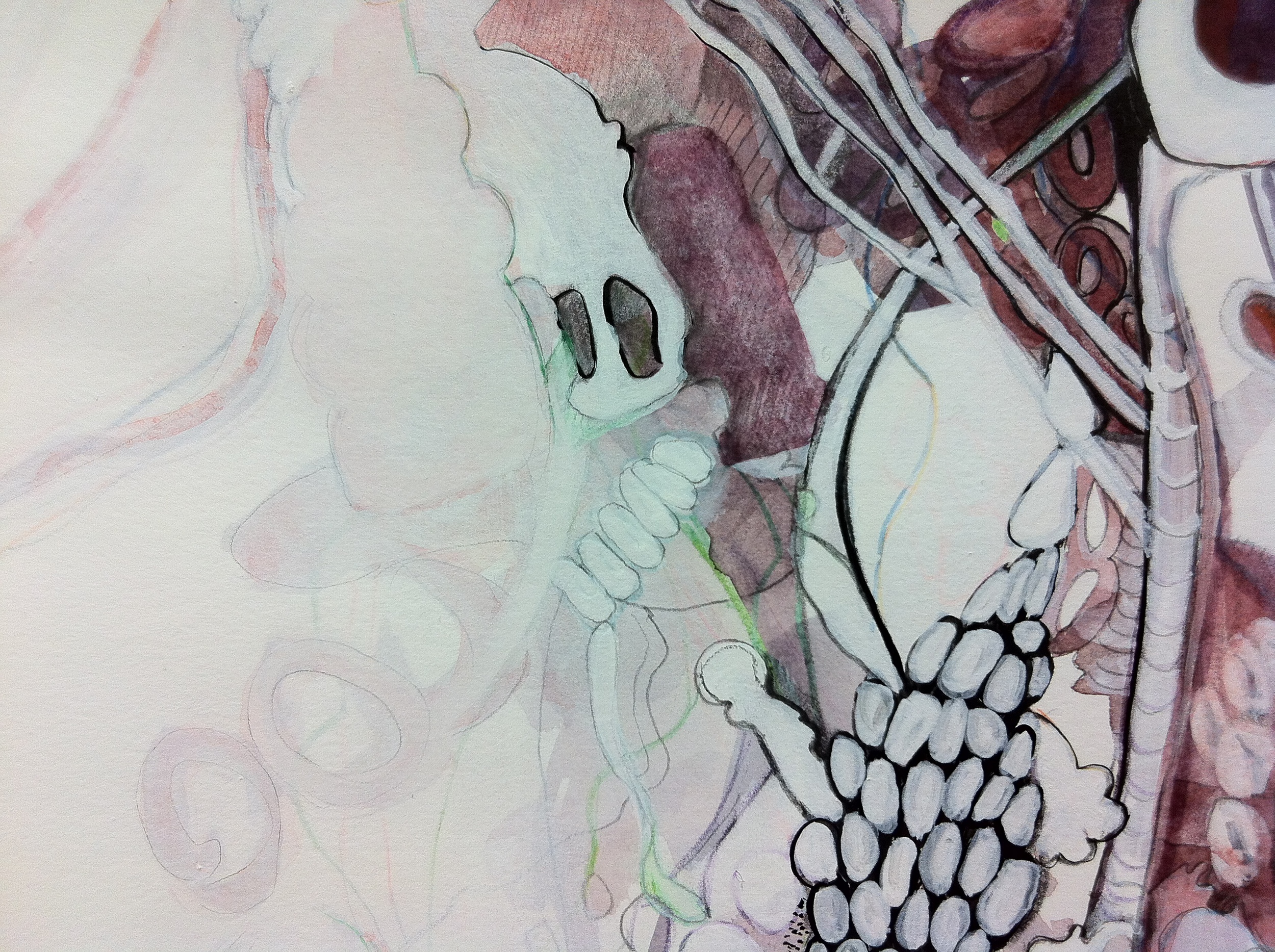I spent the entire day in the studio today experimenting with the wax resist process. I used "Susan Scheewe Wax Resist Sticks" that are a clear wax crayon. I purchased these a few years ago at Michaels. I also used a product by "Sennelier oil pastel" called a transparent medium, also in stick form. As well I used a candle, which yields good results.
I had to exert quite a bit of pressure with the clear wax crayon so that once I put an ink wash on top it would stand out -- otherwise it was too weak of a contrast and hard to see. I had excellent results with the "Sennelier" transparent stick. The downfall with it this product is that it is quite soft and leaves little chunks behind, which can be quite messy. So you have to be mindful to clean up immediately. I could mash this a bit into my finger tips and then impress my finger pads onto the paper to create different marks. I tried cheap oil pastels in colour but found the ink would cover it up or be absorbed into it.
In the early stages of my experimentation this morning I started out with a cheap student grade India Ink. This is the type that comes in a huge bottle, it is not waterproof nor does it ever get black black. I quickly discovered this and switched to my Winsor & Newton Black Indian Ink, this product is water proof and yields a deep dark black. I found it made a world of difference using the quality brand.
I sometimes laid down a watercolour wash first on top of the wax resist, I let that dry and then came in with the India ink. I would always start with a watered down version and build up to a darker value.
Paper makes a difference as well, one that isn't as absorbent like a Stonehenge shows crisper white areas. BFK Rives is more absorbent, it had good results but somehow the wax gets a bit more covered over with the watercolour or ink than when it is on the harder Stonehenge paper. Play around with both to see what you like the look of best.
I have to put more time in to this wax resist technique, I didn't get the look I was after today. I discovered what looked best to my eye was to make marks repeatedly over the entire page, as a way to generate a pattern. Strong contrast with the India ink is very important.
